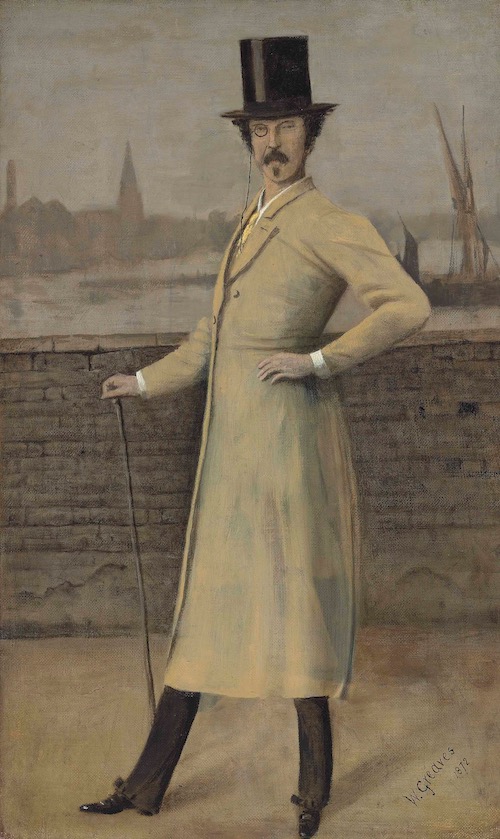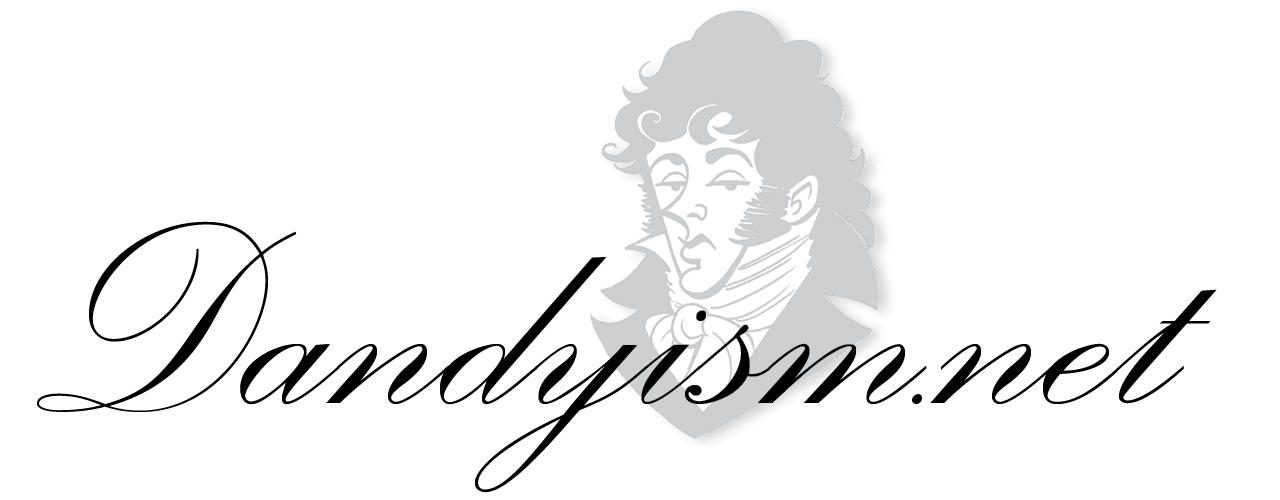
Being accosted by a fellow American in London put Gilded Age painter and dandy James Abbot McNeill Whistler into a caustic funk. When the uppity newcomer had the temerity to suggest that he and Whistler had both been born in the same town of Lowell, Massachusetts, the painter really began to get nonplussed. He adjusted his monocle and said coldly, “I do not choose to be born at Lowell.”
Whistler was a painter of no mean talent. His style was his own — a non-literal interpretation of reality that embodied traits of aestheticism and impressionism, but through a unique lens. His reputation among critics has risen and fallen over the years, but has recently been back on the uptick, with a number of critical biographies and museum retrospectives. He was often treated with less respect in his own day: “His pictures form a dangerous precedence… Another crop of Mr. Whistler’s little jokes… Criticism is powerless here… Whistler is eminently vulgar… flinging a pot of paint into the public’s face…”
It was a time when most artists kept their own mouths shut in the face of public booing and kept painting, keeping whatever barbs they had for their critics to themselves, their journals and their private correspondence. Not so Whistler.
Writes Alfred Werner in his introduction to Dover’s 1967 edition of Whistler’s collection of public correspondence and newspaper articles: “The code of silence was punctured, once and for all by the witty, proud and pugnacious author of ‘The Gentle Art of Making Enemies.'”
“The Gentle Art” opens with Whistler’s most infamous exploit: His libel suit against Oxford critic John Ruskin (he of the “pot of paint” remark). As plaintiff in that action, Whistler had demanded the court award him 1,000 pounds sterling in damages from Ruskin. “The Gentle Art” offers an excerpt from Ruskin’s original 1877 review and a transcript of the now infamous trial that followed, in which Whistler won his case but was awarded but a single farthing in damages.
Whistler was ever the protector of his public persona and the letters and articles collected in “The Gentle Art” are carefully edited and laid out with margin notes, showing the painter at his most witty and light. Werner says in the introduction that Whistler collected and printed the volume so that an important legacy would not be lost. Surely that is among the reasons. Still, one suspects another motive. The legal fees of his lawsuit against Ruskin were financially crippling. If Whistler was an innovator in modern painting, perhaps he was also an innovator in modern publishing, penning an early version what would later evolve — or rather devolve — into the “my-turn” scandal book.
“The Gentle Art” is full of witticisms. Among the best is Whistler’s response to a critic’s review of “Symphony in White, No. III,” which depicts two women in white dresses lounging against a couch. The critic complained that the painting should not be titled a “Symphony in White” because it contained other colors. Writes Whistler: “Did this wise person expect white hair and chalked faces! And does he then, in his astounding consequence, believe that a symphony in F contains no other note, but shall be a continued repetition of F, F, F.? . . . Fool!”
That Whistler’s painting was a painting and not a symphony at all does not seem to have occurred to the critic. One gets the impression that Whistler very cagily employed such pretentious musical sobriquets to his works in order to catch some ninny in exactly the way he did.
The letters and pieces that make up this 340-page volume were first published in 1890. Dover’s 1967 edition is a photographic reprint, with each of Whistler’s letters signed with his hand drawn, barbed-tailed butterfly icon. No two appear to be alike. It is one of the book’s charms.
Less charming is the fact that much of the wit contained therein is so contextual to its time, place and forgotten victims that it’s all but meaningless to most contemporary readers, unless they have a masters in art history with an emphasis in late 19th-century painting. There are few of the kind of timeless epigrams that make Wilde, for example, so poignant today.
What some enterprising and education-oriented publishing house ought to do is republish the work with explanatory footnotes and endnotes explaining who’s who, because sometimes you can’t tell your aesthetes one from another without a program. — MICHAEL MATTIS
